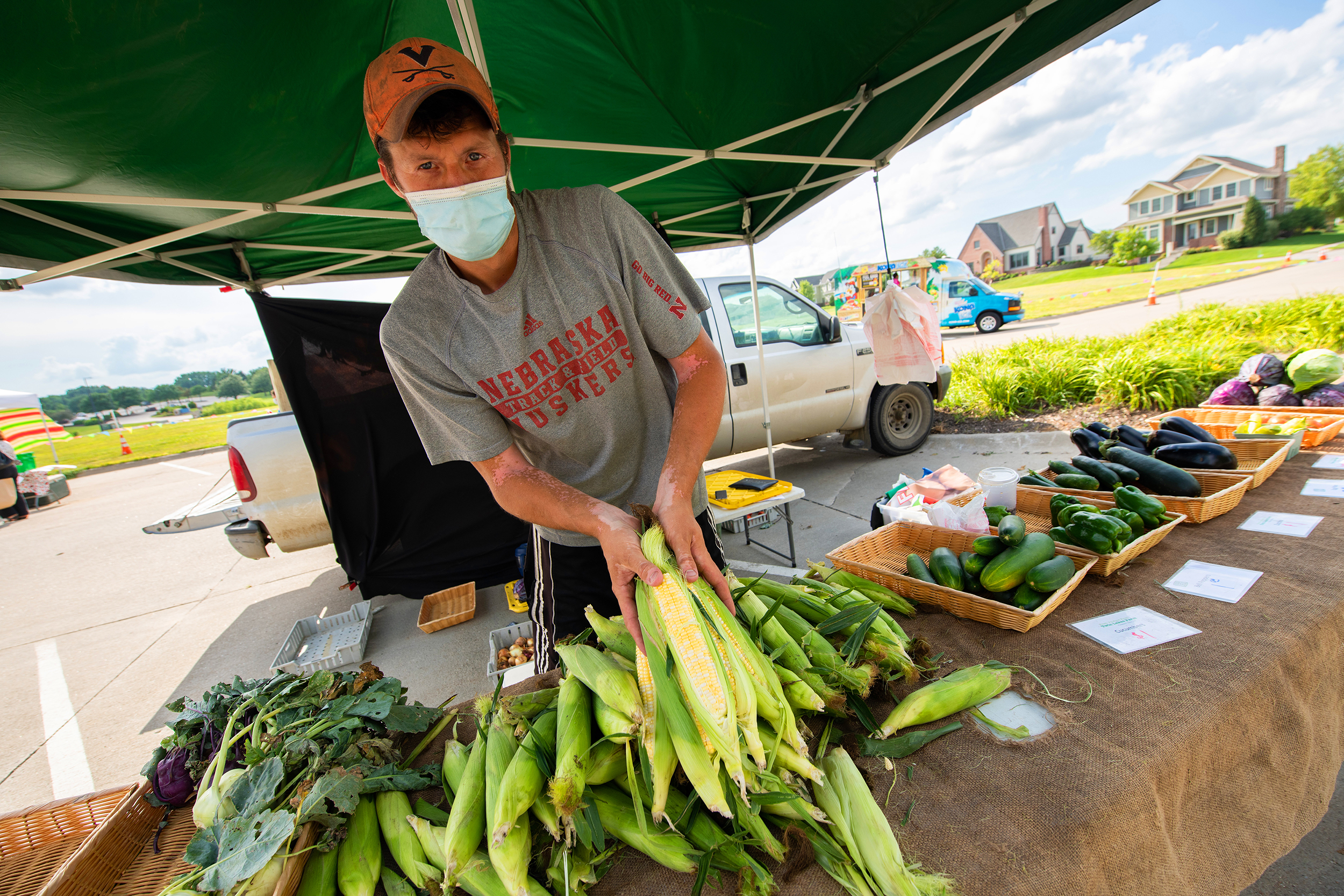
Since 2018, Open Harvest, a cooperative grocery store in Lincoln, has worked with Nebraska Extension to make it easier for SNAP recipients to buy fresh produce.
Open Harvest is one of three grocery stores and seven farmers markets in Nebraska that participate in extension’s Double Up Food Bucks program, which allows SNAP customers— those participating in the U.S. Department of Agriculture’s Supplemental Nutrition Assistance Program — to stretch their benefits. Consumers can earn up to $20 in additional benefits when they use SNAP to purchase fresh fruits and vegetables. This is a big benefit to SNAP recipients, who may otherwise forgo fresh produce for more economical, less nutritious options, said Open Harvest general manager Amy Tabor. But the impact of the program extends beyond those who receive SNAP benefits, she said. It benefits the local farmers who sell their produce at Open Harvest, too.
“Last fiscal year, we saw a small increase in our local produce sales, which is wonderful considering the disruption of COVID-19 on our overall shopping patterns,” Tabor said. “When we sell more produce, we buy more produce from these local farmers, which keeps the money circulating in our local food system.”
Now, a new $1 million, three-year grant will allow Nebraska Extension to expand the program to more grocery stores and farmers markets across the state, said Vanessa Wielenga, an assistant extension educator with Nebraska Extension and coordinator of the state’s Double Up Food Bucks program.
Extension’s partner, the Nebraska Community Foundation, will serve as the grant recipient and caretaker of the funds. The USDA’s Gus Schumacher Nutrition Incentives Program awarded $500,000 to the foundation for expansion of the program. Children’s Hospital, CHI Health, the foundation and the university pitched in to match the USDA’s $500,000, bringing the grant total to $1 million.
Currently, the program operates on a budget of about $70,000 a year. With the new funding, extension will be able to expand the program into rural communities, and after the three years, the program will be in more than twice as many grocery stores and farmers markets as it is now, Wielenga said. She hopes to add more locally owned grocery stores and farmers markets that serve the most vulnerable Nebraskans.
“Similar to metro communities, there is a significant number of rural Nebraskans who lack access to fresh produce,” said Jeff Yost, Nebraska Community Foundation president and CEO. “Our hope is that the expansion of this program will benefit not only Greater Nebraskans, but also local growers and local small businesses. This program has the potential to help the local food movement already happening in many of our Greater Nebraska communities become more inclusive to all.”
Fresh produce is the most perishable product on a grocery store shelf, Wielenga said. That makes programs such as Double up Food Bucks that incentivize the purchase of fruits and vegetables — which are more likely to end up going to waste — just as valuable for grocery stores as for the consumers who gain better access to nutritious foods.
“This program has a huge benefit to local economies and to local, healthy food access,” she said.
In the United States, one in 10 households struggles with food insecurity, meaning that more than 100 million low-income Americans cannot afford or have trouble affording nutritious food, according to the USDA. The Gus Schumacher Nutrition Incentives Program — formerly known as the Food Insecurity Nutrition Incentives program — is one of several USDA programs working to bridge this gap. The program aims to help low-income families participating in SNAP increase their ability to purchase fruits and vegetables at farmers markets, through CSAs and from traditional brick-and-mortar grocery stores.
The program is authorized through the Farm Bill and provides grants on a competitive basis to projects that help low-income communities purchase fresh fruits and vegetables directly from farmers.
Building connections between farmers and consumers is one of the most rewarding parts of the program, said Lori Allison, who coordinates the Double Up Food Bucks program at Open Harvest.
“This program gives folks more choices on where and how to get healthy fruits and veggies on their plates,” she said. “It goes back to drawing those connections between the individual consumers, local producers, farmers market and local retailers.”








